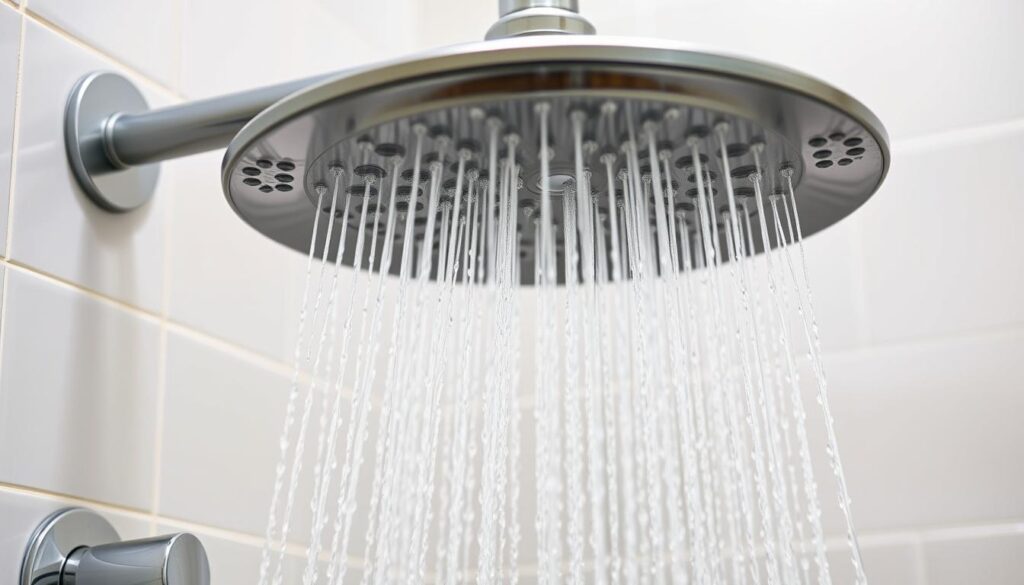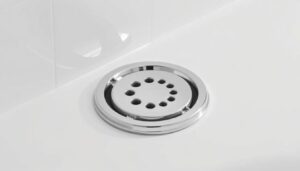Are you tired of a lacklustre shower experience due to weak water pressure? You’re not alone. Many UK households struggle with this issue, turning a refreshing morning routine into a frustrating ordeal. It’s not just about the inconvenience; inadequate shower pressure can make it difficult to rinse shampoo properly or feel refreshed.
This comprehensive guide is designed to help you identify the causes of low water pressure in your shower and implement effective solutions. Whether it’s a simple DIY fix or a more significant plumbing upgrade, we’ll walk you through the steps to restore a powerful shower experience.
Key Takeaways
- Identify common causes of weak shower pressure.
- Learn simple DIY fixes to improve water flow.
- Understand when a plumbing upgrade is necessary.
- Discover how to maintain optimal shower pressure.
- Explore solutions to enhance your overall bathroom experience.
Understanding Low Water Pressure in Showers
One of the most frustrating bathroom issues is low water pressure in the shower. It’s a problem that can turn a refreshing start to the day into a disappointing experience. Understanding what constitutes low water pressure and its impact on your shower is crucial to addressing the issue effectively.
What Constitutes Low Water Pressure
Low water pressure is typically defined by the time it takes to fill a container with water from your shower head. If it takes more than 6 seconds to fill a 1-litre jug, then you have low water pressure. This simple test gives you a clear indication of whether your shower is suffering from this issue.
Impact on Your Shower Experience
Low water pressure can significantly affect your shower experience. Some of the key impacts include:
- Difficulty rinsing shampoo and conditioner, often leaving residue in your hair.
- Inadequate cleansing due to a weak shower stream, potentially leaving soap residue on your skin.
- Extended shower times as you struggle to rinse properly, leading to increased water usage.
- A negative psychological impact, as starting your day with an unsatisfying shower can affect your mood and energy levels.
| Aspect of Shower Experience | Impact of Low Water Pressure |
|---|---|
| Rinsing Hair | Difficulty in rinsing shampoo and conditioner |
| Cleansing Body | Insufficient pressure to properly cleanse |
| Shower Duration | Extended shower times |
| Psychological Impact | Negative impact on mood and energy |
Understanding these impacts can help you appreciate the importance of addressing low water pressure in your shower. Whether it’s through simple DIY fixes or more significant upgrades, taking action can greatly enhance your daily shower routine.
Common Causes of Low Shower Water Pressure
Several factors can contribute to low water pressure in your shower, and knowing these can help you fix the problem. Understanding the root cause is crucial to applying the correct solution.
Old or Clogged Pipes
One of the primary reasons for low water pressure is old or clogged pipes. Over time, pipes can accumulate mineral deposits, debris, and sediment, which restrict water flow. If you live in an older home, it’s likely that your pipes may be contributing to the issue.
Shower Head Issues
The shower head itself can also be a culprit. Limescale buildup, mineral deposits, or blockages within the shower head can significantly reduce water pressure. Regular cleaning or replacing the shower head can often resolve this issue.
Partially Closed Valves
Partially closed shut-off valves can restrict water flow, leading to low pressure. Ensure that these valves are fully open to allow maximum water flow.
Water Supply Problems
If you live in or close to a city or town centre, your low water pressure might be due to the mains water system. Municipal water supply issues, peak usage times, and properties located at higher elevations or far from main water supply lines can all impact water pressure. Consider the following factors that might affect your water supply:
- Municipal water supply issues affecting entire neighbourhoods
- Peak usage times causing temporary drops in water pressure
- Properties at higher elevations or far from main supply lines experiencing lower pressure
- Seasonal variations impacting water pressure
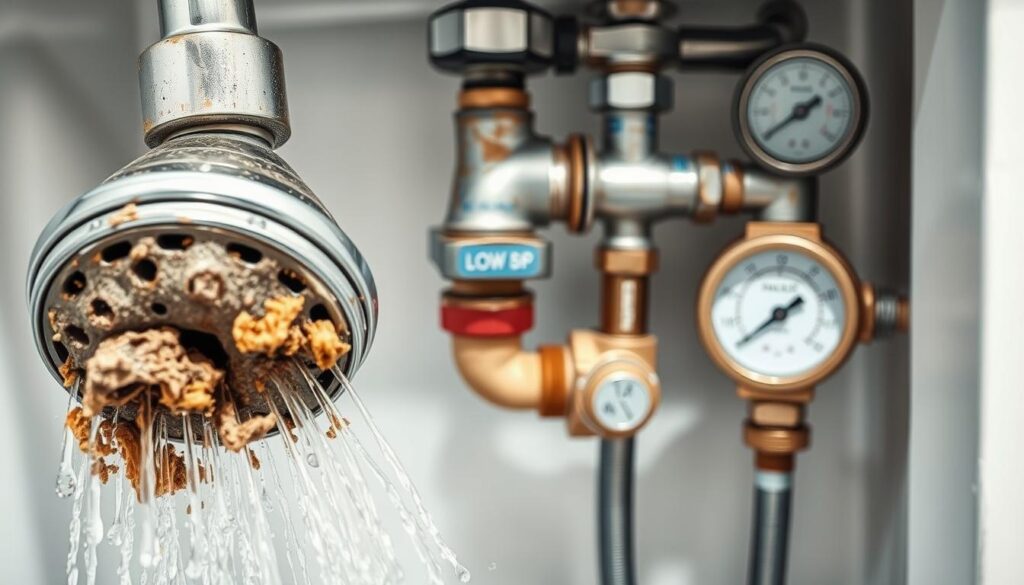
How to Test Your Shower’s Water Pressure
Testing your shower’s water pressure is a crucial step in identifying the root cause of low pressure issues. To do this, you can perform a simple yet effective test.
The Measuring Jug Test
To conduct the test, place a 1-litre measuring jug under your shower head. Turn the shower on full, and time how long it takes to fill the jug. If it takes more than 6 seconds to fill the jug, then you have low water pressure.
Interpreting Your Test Results
Understanding your test results helps determine the severity of your water pressure issue and guides your approach to fixing it. If your jug fills in less than 6 seconds, your shower has good water pressure. A filling time between 6-10 seconds indicates moderately low pressure, while a time of more than 10 seconds signifies significantly low pressure.
As plumbing experts suggest, “comparing test results from different taps in your home can help determine whether the issue is isolated to your shower or affects your entire plumbing system.”
- A flow rate above 10 litres per minute indicates good water pressure, and any issues may be related to shower head design.
- A flow rate between 6-10 litres per minute suggests moderately low pressure that can be improved with simple DIY fixes.
- A flow rate of less than 6 litres per minute indicates significantly low pressure that may require more substantial interventions.
Quick DIY Fixes for Low Water Pressure
Don’t rush to call a plumber; try these quick and easy DIY fixes to increase water pressure in your shower.
Cleaning Your Shower Head
One of the simplest ways to improve your shower’s water flow is by cleaning the shower head. Mineral deposits and debris can clog the shower head, reducing water pressure. Remove the shower head and soak it in a mixture of vinegar and water to dissolve any buildup. Use an old toothbrush to scrub away any remaining debris.
Removing Flow Restrictors
Many shower heads come with flow restrictors to conserve water. However, these can significantly reduce water pressure. Check your shower head for a flow restrictor, usually located inside the shower head or in the shower arm. Removing this restrictor can improve water flow. Be aware that removing the restrictor might increase your water consumption.
Checking and Adjusting Shut-off Valves
If you’ve recently moved into a new home or had plumbing work done, it’s essential to check that your shut-off valves are fully open. Partially closed valves can significantly reduce water pressure. Locate your main shut-off valve, typically found near your water meter or where the main water line enters your home. Ensure it’s fully open by turning it anti-clockwise. Check fixture-specific valves as well, usually behind an access panel.
| DIY Fix | Effectiveness | Complexity |
|---|---|---|
| Cleaning Shower Head | High | Low |
| Removing Flow Restrictors | Medium | Medium |
| Adjusting Shut-off Valves | High | Low |

By implementing these DIY fixes, you can potentially increase water pressure and enhance your shower experience. Always check the main and fixture-specific valves to ensure they are fully open, as partially closed valves are a common cause of low water pressure.
Fixing Low Water Pressure in Shower: Deep Cleaning Methods
Low water pressure can often be addressed through simple yet effective deep cleaning techniques. When your shower head is clogged with limescale and debris, it can significantly reduce water flow, affecting your overall shower experience.
Vinegar Soak Method for Shower Heads
One effective method for cleaning your shower head is the vinegar soak. To do this, fill a sandwich bag with vinegar and secure it around the shower head using a rubber band. This method helps dissolve limescale and break down sediment, restoring water flow. It’s a simple, non-invasive technique that can make a significant difference in your shower’s water pressure.
Dealing with Limescale Buildup
Limescale buildup is a common issue, especially in areas with hard water. It affects not just your shower head but potentially your entire plumbing system. Regular maintenance is key; using a shower spray cleaner after each use can help prevent limescale accumulation. For more severe buildup, consider using a descaling solution designed for plumbing systems. In extreme cases, especially in older properties, consulting a professional plumber about pipe replacement might be necessary.
By implementing these deep cleaning methods, you can improve the flow and overall performance of your shower, ensuring a more satisfying experience.
Upgrading Your Shower Components
Enhancing your shower’s performance can be as simple as upgrading a few key components. By replacing or upgrading certain parts, you can significantly improve your shower experience.
Choosing a High-Pressure Shower Head
If you’re dealing with low water pressure, switching to a high-pressure shower head can make a noticeable difference. When searching for the best high-pressure shower head in the UK, consider models designed to maximise water pressure while minimising water usage.
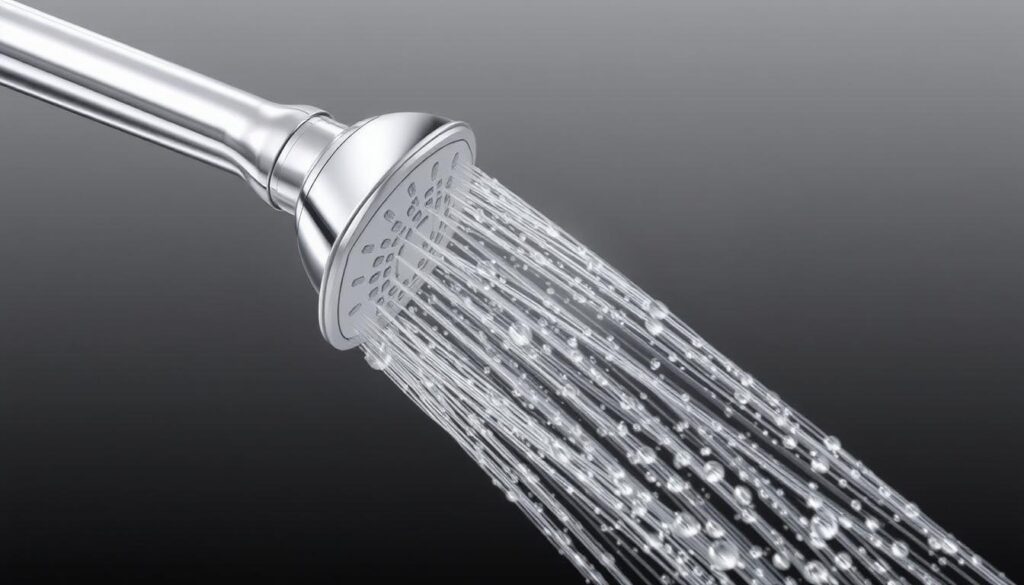
Replacing Old Shower Hoses and Arms
Aged or kinked shower hoses can significantly restrict water flow, making replacement an effective solution for improving shower pressure. Standard shower hoses typically narrow over time due to internal mineral buildup, particularly in hard water areas.
When selecting a replacement hose, choose one with a wider internal diameter (typically 8-10mm) to maximise water flow. Consider upgrading to a stainless steel or anti-twist hose that resists kinking and maintains consistent water pressure.
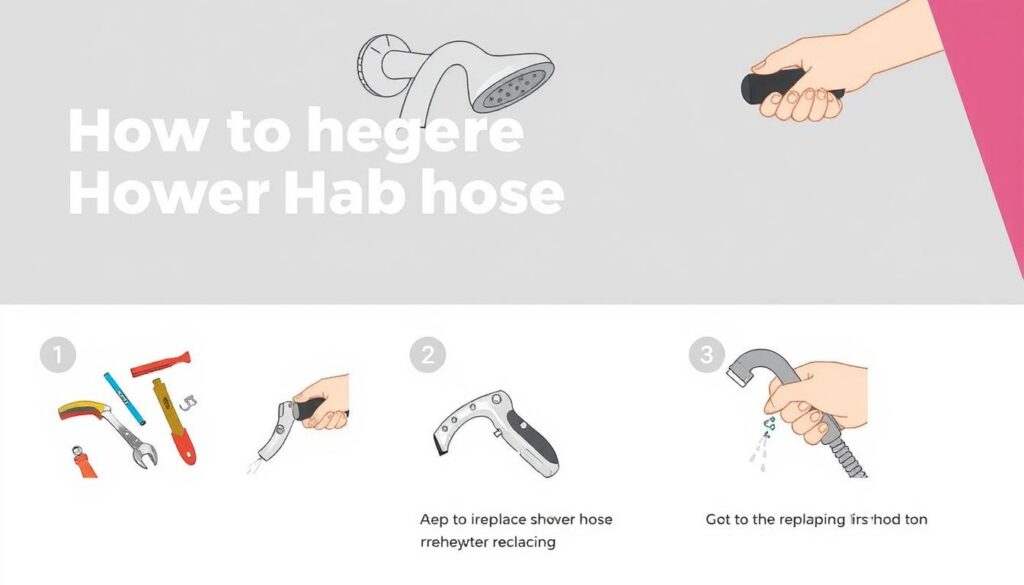
Replacing both your shower hose and arm can often yield the best results, especially if the existing components are old or have a narrow diameter.
Professional Solutions for Persistent Low Pressure
If you’re struggling with persistent low water pressure in your shower, it may be time to consider professional solutions. Low water pressure can significantly affect your shower experience, making everyday activities less enjoyable.
Installing a Shower Pump
One effective solution is installing a shower pump. A shower pump can boost the water pressure, providing a more satisfying shower experience. When selecting a shower pump, consider the type that suits your plumbing system and ensure it’s compatible with your hot water supply.
Upgrading Your Plumbing System
Sometimes, the issue lies with the plumbing system itself. Upgrading your plumbing can resolve low pressure problems by reducing mineral buildup and improving overall water flow. This might involve replacing old pipes or installing a more efficient system.
Electric Showers and Power Showers
Electric showers and power showers are other viable options. Electric showers heat water as it passes through, making them independent of your home’s hot water system. Power showers, on the other hand, use a pump to boost pressure from both hot and cold water supplies. Both provide consistent pressure, eliminating drops when other taps are used.
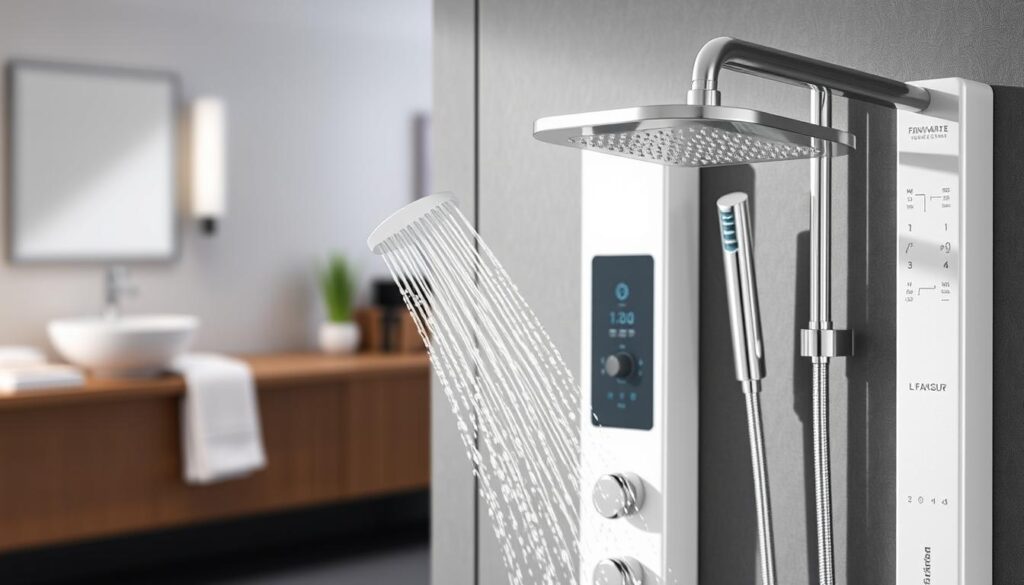
When choosing between electric and power showers, consider your hot water availability and specific needs. Power showers are ideal for homes with a good hot water supply but poor pressure, while electric showers work well in any pressure situation.
Cost Considerations for Different Solutions
Understanding the financial aspects of different solutions is key to resolving low water pressure issues in your shower. The cost of addressing low water pressure can vary widely, from budget-friendly DIY fixes to more substantial investments in professional solutions.
Budget-Friendly DIY Options
For those on a tighter budget, DIY solutions can offer a cost-effective way to improve water pressure. Cleaning or replacing your shower head and checking shut-off valves are simple tasks that can be done without significant expense. The cost of materials for these tasks is relatively low, typically under £50.
Investment in Professional Solutions
Professional solutions, such as installing a shower pump or upgrading your plumbing system, offer more substantial and permanent fixes but come with higher price tags. The cost of a shower pump can range from £150 to £500, with installation costs adding another £200 to £300.
| Solution | Cost | Installation Cost |
|---|---|---|
| Shower Pump | £150-£500 | £200-£300 |
| Plumbing Upgrade | £1,500+ | Professional installation required |
| Electric Shower | £100-£300 | £200-£400 |
| Power Shower | £200-£500 | £300-£500 |
“Investing in a good quality shower pump can significantly improve your shower experience, providing a more satisfying and refreshing experience.”
Conclusion
You don’t have to settle for a weak shower experience. Fixing low water pressure can be achieved through simple DIY fixes or more comprehensive plumbing upgrades. Start by cleaning your shower head and checking valves. If issues persist, consider upgrading to a high-pressure shower head or installing a shower pump. Multiple solutions may be needed to achieve optimal water pressure.
